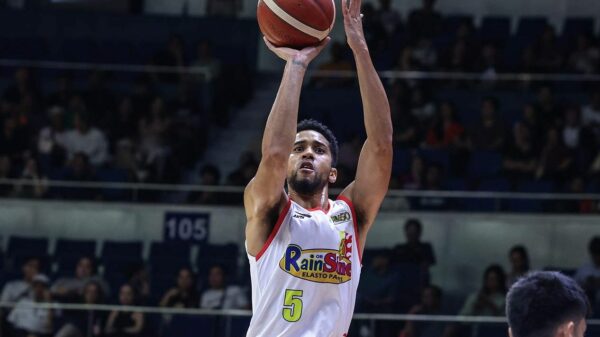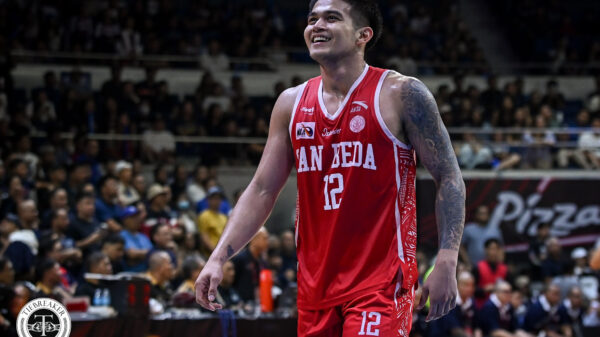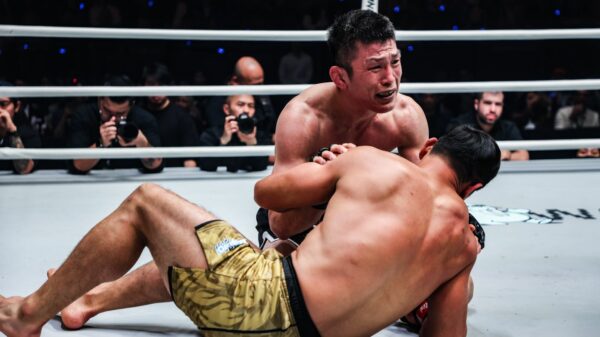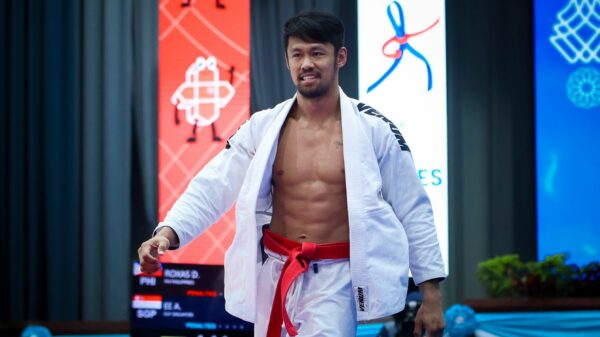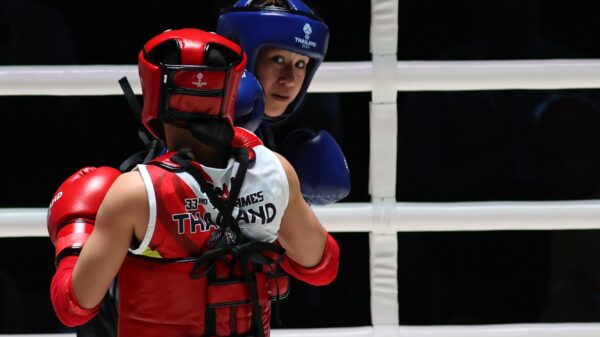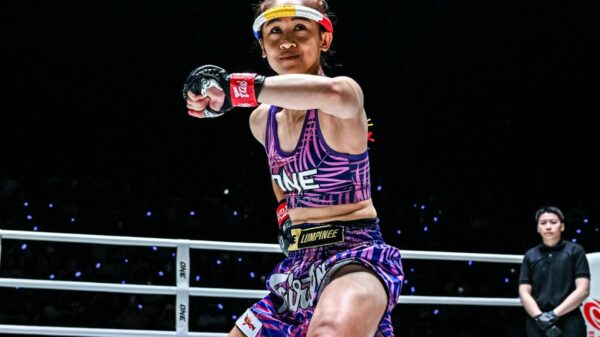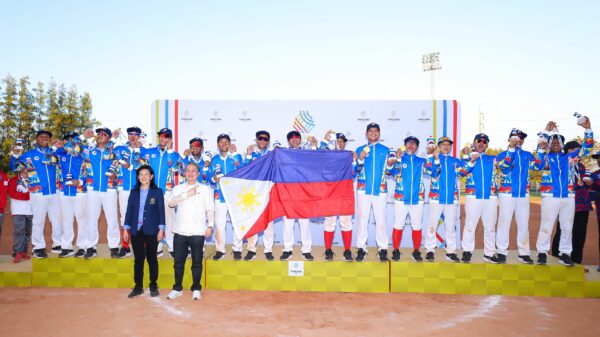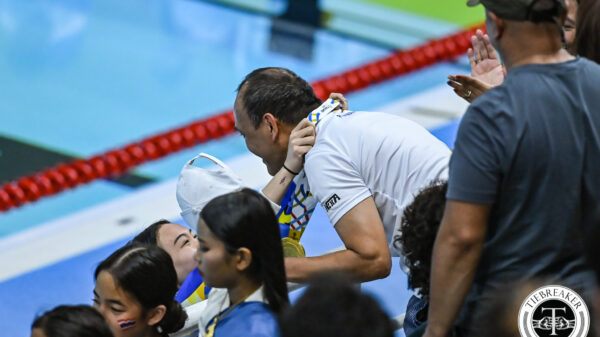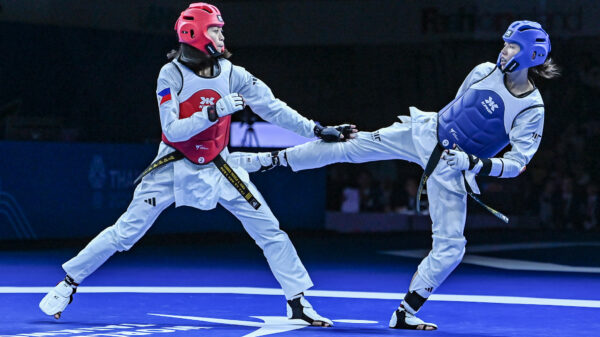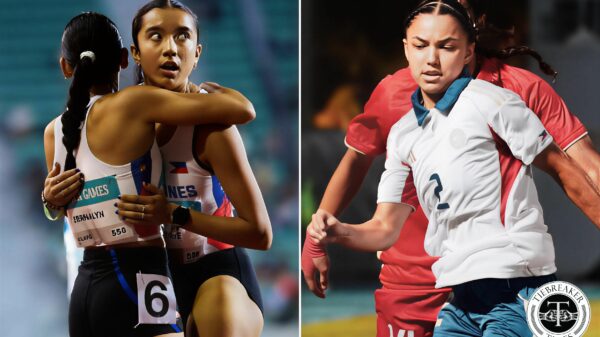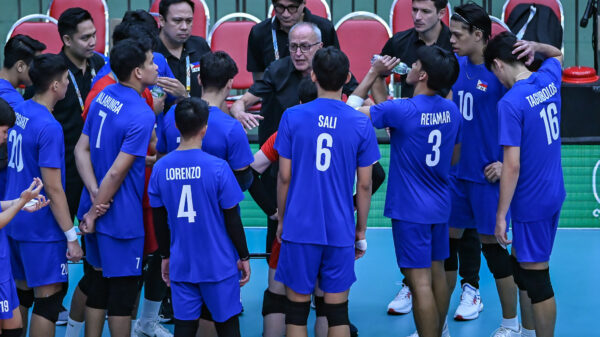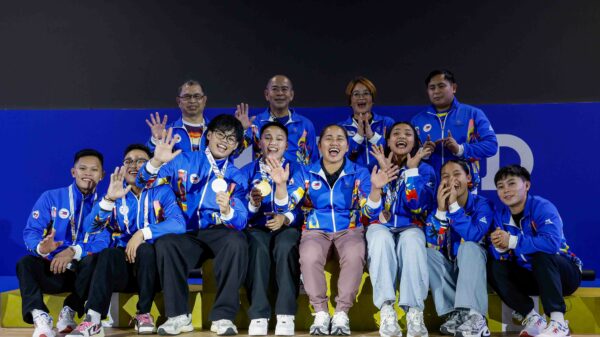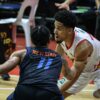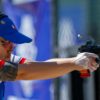| “You gain strength, courage, and confidence by every experience in which you really stop to look fear in the face. You must do the thing which you think you cannot do.” –Eleanor Roosevelt |
To be an Ironman, one does not need to be an American billionaire playboy engineer who injures his chest while being kidnapped to build a weapon of mass destruction, and forges a powered suit of armor to protect the world. Though Tony Stark belongs to the realm of fiction, this so called Ironman belongs to reality.
By definition, an Ironman is someone who accomplishes an Ironman Triathlon—a long distance triathlon race organized by the World Triathlon Corporation (WTC) consisting of a 3.8-kilometer swim, a 180-kilometer bicycle ride, and a 42.2-kilometer run, raced in that order continuously without a break.
To put that into context:

Cycling the full 180-kilometers is the total distance from Metro Manila going to Bataan and back

Covering a full marathon is like running from the Skyway Filinvest exit until Buendia and back
Considered as one of the most difficult one-day sporting events in the world, most Ironman events provide over 2,000 triathletes a strict time limit of 17 hours to complete the race. The Ironman World Championship has been held annually in Kailua-Kona, Hawaii since 1978, which is preceded by a series of qualifying Ironman events from all over the world.
For this piece, an Ironman is an individual who seeks to conquer his inconceivable fears, defying his physical, emotional, and mental boundaries to achieve this feat and proving himself worthy in the company of the greatest triathletes in the world.
Laying the Foundation
Every athlete has a story and every story has a beginning. For a trio of Filipino triathletes, the road to the 2014 Ironman World Championship started within.

Meet William Veto, Gadric Chusenfu, and Joseph Palisoc
Joseph Michael Lim Palisoc, the youngest of the three at 27 years old, is currently working at Pru Life UK as an Actuarial Analyst. He started running when he was in high school at Xavier, eventually learning how to swim and bike properly during his formative years in De La Salle University College of St. Benilde. Prior to joining any major competition, he experienced a gout attack that made him seek a healthier lifestyle, motivating him to develop a career in sports.
Similarly, his co-triathlete Ignatius Gadric Chusenfu, current president of Infinity Dragon Board Corporation, shared the same sentiments after experiencing a gout attack when he was in college at De La Salle University.
At 32, Gadric remembers how he used to be overweight due to his all-out partying lifestyle. At one point, he simply had enough and committed himself to getting back into shape through varsity swimming and football. No stranger to competition, Gadric knew it was only a matter of time before he rekindled the same intensity and desire to race, and he started to join triathlons in 2011.
In contrast to how the previous two individuals started out as triathletes, William Veto, 52, was simply finding a way to meet new people.
After finishing his collegiate education in University of the Philippines Diliman, he pursued his master’s degree in business administration at New York University before taking up law in Fordham University. Completing his post-graduate studies led him to look for a job and while doing this, he stumbled upon a team preparing for a triathlon which he wanted to be part of. However, joining their social gatherings had one prerequisite requirement—finishing a race.
William then began competing in triathlons back in 1996, elevating himself to the Ironman distance two years after and gaining the respect of his peers. When he is not competing, he disguises himself as a lawyer during the day.
Paying the Price for Luck
There are three realistic ways for Filipino triathletes to be part of the Ironman World Championship: qualifying by time, getting drawn via lottery, or being selected through the Legacy Program.
Every full-distance Ironman event offers a minimum of one qualifying spot per age group for the World Championship, which usually requires an individual to obtain a podium finish with their age group. Consequently, the number of qualifying slots in each age category is dependent on the number of competitors in each group, featuring more allocated slots to the 35-39 and 40-44 age groups which have the most competitors.
For athletes who are not on the same level as elite triathletes but have the capacity to accomplish the enduring feat, this is where the Ironman Lottery and Legacy Programs come in.
The lottery has more than 7,000 applicants from all corners of the globe competing for 100 slots which makes it extremely close to winning a golden ticket to the Willy Wonka Factory. For this particular year, the organizing committee opened two slots solely for the Philippines. Those two slots turned out to be Joseph and Gadric.
“Nung nagsimula ako mag-triathlon, wala naman talaga akong plano to go all the way and race the full distance,” said Pru Life UK Tri Team representative Joseph, who recalls joining the lottery to take his chances. “When they announced it on the local Ironman Facebook page, napatalon talaga ako nung nalaman ko na ako yung napili.”
Likewise, Gadric never dreamed of doing a full Ironman distance. He registered thinking it was a long shot to be selected for the race. “Di naman ako napipili sa raffle pero kung mapili ako, I said to myself ‘if there is a chance to do it, might as well be Kona,” shared the Sabak Tri Team representative.
On the day he discovered that he was going to represent the Philippines in Hawaii, Gadric remembers vividly how he left his phone at home to use the bike trainer at his office just to be greeted by a wave of missed calls, unread messages, and a sudden rush of mixed emotions.
“Kaya ko ba ito? Baka di ko kayanin yung training at mas lalo na yung race,” said Gadric. But after being reaffirmed by his call to Princess Galura, Project Director of Sunrise Events Inc., local counterpart of the WTC, he knew that it was time to step up.
Meanwhile, William eventually wound up getting chosen through the Legacy Program. Only on its second year, the program grants 100 loyal athletes an opportunity to compete in Kona at least once in their lifetime.
To be eligible for this selection, athletes must meet each of the following criteria: have completed at least 12 full-distance Ironman-branded races, never started the Ironman World Championship, completed at least one full-distance Ironman event in each of the last two years, and be registered for a full-distance Ironman event in the current year.
Competing in at least one Ironman race since 1998 with a staggering 25 Ironman performances under his belt, the selection came more as a mere formality for his accolades, not to mention fewer individuals to compete against in the draw.
Preparing for the Course
Fear is an emotion that arises from the perception of danger. For first-timers Joseph and Gadric, they knew they had to push their bodies beyond their limits if they were going to do what they formerly considered unthinkable—a figment of their imagination.
With the easy part of being handpicked now in their rear view mirror, it was time to put in the work to be ready for their most daunting challenge yet. Not only did they need to prove to the Filipino triathlete community that they were worthy of being chosen, but also to feel proud sharing the same course with the likes of Germany’s Sebastian Kiele and Americans Ben Hoffman and Andy Potts.
With a 9 to 6 work week and Saturdays dedicated to the family business, Joseph sneaked in his training whenever and wherever he could—alternating between riding the bike trainer, running on the treadmill at home, and swimming at his condominium’s pool. As for Gadric, he would wake up at 5 am during weekdays and adjust training schedules to accommodate swimming, biking, and running.
Both had to sacrifice their social life, family time, and at times rest to fully commit to their rigid training schedules to accumulate enough preparation hours for Kona. Basically, their game plan for weekdays was increasing speed in short distances while weekends focused on building stamina through extended sessions.
Preparations for William took on a different route given his mileage. For the World Championships, he veered away from the stationary bike to do more outdoor training, simulating the closest race conditions possible. What was most important for him during training was to stay within his base distance for swimming.
Months turned to weeks, and weeks into days. Pressure to perform trickled in with the newcomers as Kona was fast approaching. Given the prestige and magnitude of this event, it was inevitable.
“Medyo kinakabahan kasi siyempre mafefeel mo na napaka-swerte mo makakuha ng slot kahit na newbie ka, so talagang kailangan matapos mo yung course,” said Joseph.
“We are always reminded by other triathletes that since the World Championship is the last race for the year, people will be watching us so pressure was there before even flying to Hawaii,” added Gadric.
Given the number of years he has been doing this, William felt bittersweet about his attempt to conquer the Olympics of Ironman races.
“Given the sheer amount of triathletes who will take advantage of qualifying for the Legacy Program, this might be the only chance that I will get to do it,” explained William. “At the same time, I get excited when I train with these two younger people thinking despite the age, ‘I can do well again!’”
After spending at least 11 hours of flight time to reach the destination, the three Filipinos did their best to soak in as much as they could from the race festivities prior to the main event.
For Gadric, arriving a week earlier allowed him to cherish his experience further as soon as he checked in at Ali’i Drive, off the coast of Hawaii. Admiration filled his eyes knowing he was in the midst of 2,000 of the world’s finest triathletes.
“It felt like a vacation, like going to the Disneyland of triathletes because I saw a lot of pros. Everyone was either running, biking, or swimming throughout the coast,” said the La Sallian.
Still feeling how surreal this was, unveiling right before his very eyes, Joseph shared, “Medyo starstruck sa mga tao kasi they are the best in the world. It felt like NBA fans seeing LeBron and Kobe—only getting courtside seats and the chance to play in the same game with them.”
On the other hand, the lawyer had a certain calm after checking in the island. “It was more methodical given the small amount of time to experience everything from getting your bike, putting in some practice, and going to the expo,” shared William. “Everything needed to get fit in so one can rest by the time the day before the race arrives.”
Knowing beforehand he was going to be competing with individuals who actually qualified for the race, his mindset became more relaxed and focused on finishing the race strong. William explained, “I knew they were really going to get ahead of me so I could not get out of my pace just to keep up with them or else I would have blown my race.”
Whatever was going through their minds, they were assured that Filipinos from all over the world were rooting for them. In the Parade of Nations, part of the festivities held a few days leading to the race, people cheered louder when they saw the Philippine flag, a testament that sports knows no boundaries within race, gender, or religion.
Searching for Significance
To make this race more meaningful, the triumvirate set up a fundraiser to help the victims of Typhoon Yolanda. After assisting devastated portions of the Visayas region, the Ironman Foundation started a worldwide relief effort called the Humanitarian Project.
As an international organization, the Ironman Foundation was able to reach out to triathlon communities in all parts of the globe to solicit cash donations and raise more funds through the sale of Humanitarian shirts designed with the Ironman logo.
The amount generated by the Ironman Foundation—together with the funds raised by Sunrise Events Corporation, the local organizers of Cebu Ironman 70.3, and local non-profit organization Gawad Kalinga Foundation—was used to give birth to the Ironman GK Village in Bantayan Islands.
International professional triathletes, Filipino elite triathletes, Ironman organization officials and Sunrise Events Corporation held the ground breaking of the Ironman GK Village last August 5, 2014 in what is planned to be a construction of 24 new homes for affected families.
Embarking on the Journey
Kailua is located at the western part of the island of Hawaii. Kailua means “two seas” or “two currents” in the Hawaiian language, a contraction of the words kai meaning “sea” and ‘elua meaning “two.” It is named this way because of the two currents running through Kailua Bay, the body of water responsible for the swimming portion of the race.
With all the preparations done—equipment, race gear, and nutrition—it was just a matter of time until the race commenced. On October 11, all competitors assembled at Palani Road before submerging to the starting point at Kailua Bay for the gun start at 7:00 am.
Given the experience of competitors during the race, the trio navigated the waters with relative ease, finishing well beneath the 2 hours and 20 minute time limit. Emerging from the waters, they had to ride their bikes towards Hawi, ascending all the way north of the border. The scorching heat throughout the bike course that traversed the lava fields of Hawaii combined with the strong gusts of wind proved to be nature’s ultimate test.

The heat and the wind became nature’s test
“I experienced my lowest point climbing to Hawi because of the exceptionally strong winds coming from different directions and wind resistance during the climb,” shared Joseph. “On my ascent, I saw someone who crashed on the way down. It was demoralizing thinking that after reaching the U-turn I still had a long ways to go, so I really had to dig deep to persevere until the finish.”
“I was feeling so much pain especially when I was on the bike but I had to make the most of what God has given, whatever the conditions were,” said Gadric. “At the 130 kilometer mark, I had already thought of giving up but could not let myself down so I kept going.”
The U-turn from Hawi symbolized the real start of the race. From this point onwards, the physical challenges manifested from fatigue to cramping and all sorts of bodily pain. The race now becomes a mental challenge—a competition between you and yourself.
“Given the amount of time on the road while riding the bike and running on your own, if there was one word to describe the race experience, it would have been spiritual,” said Joseph.
Crossing the Finish Line
Fast forward until the sun set to make way for darkness. A few hours before midnight, the Philippine trio all successfully crossed the finish line in varying times with no injuries.
“I saw Will and caught up with him but after that, I looked for my wife to thank her for all her support. It was the first race that she woke up early to drop me off at the starting point,” said Gadric. “When I finished it, parang nawala lahat ng pagod ko. I have never felt more complete.”
Where he came from as a recovering alcoholic and drug addict, truly the greatest miracle was a change of heart. “My proudest moment as a triathlete is to have left my old self to become a better person,” shared the newly emblazoned Ironman.
In spite of acknowledging that this may be his only chance to experience the World Championships, William continues to hope that someday in the future, he would still be able to compete and get selected again especially after seeing an 84-year old competitor stand the test of time. Realistically speaking, he wants to continue racing not because of bragging rights, but because he stills gets something positive from the experience.
“Though the Kona experience will not come to everybody, my hope is that Filipinos do not stop trying to chase this opportunity. At the same time, my experience in Kona does not take away what I have done in Langkawi and Melbourne,” shared William. “What you get from the sport will always be most important, not the location of the race. Through these experiences, I have learned to become an understanding person, husband, and friend.”
Greeting them at the race was a voice from the speakers, “Joseph Palisoc, Gadric Chusenfu, and William Veto from the Philippines, you are an Ironman!”
Indeed, anything possible if you put your heart and mind into it. These three individuals are living testaments of this inspirational journey to greatness. In Joseph’s own words, “Do not be afraid to try something new, and something that scares you.”
Their greatest fears already knew that from the start.
| NAME | BIB | TIME | RESULT |
| Veto, William | 691 | 14:04:12 | IRONMAN |
| Chusenfu, Ignatius Gadric | 1803 | 14:14:23 | IRONMAN |
| Palisoc, Joseph | 2059 | 14:59:32 | IRONMAN |

